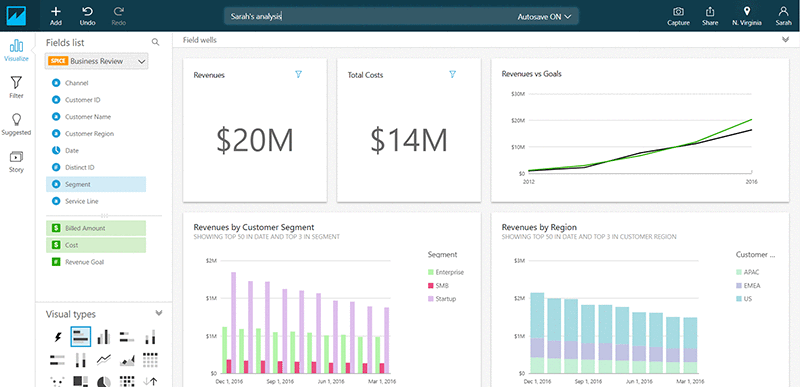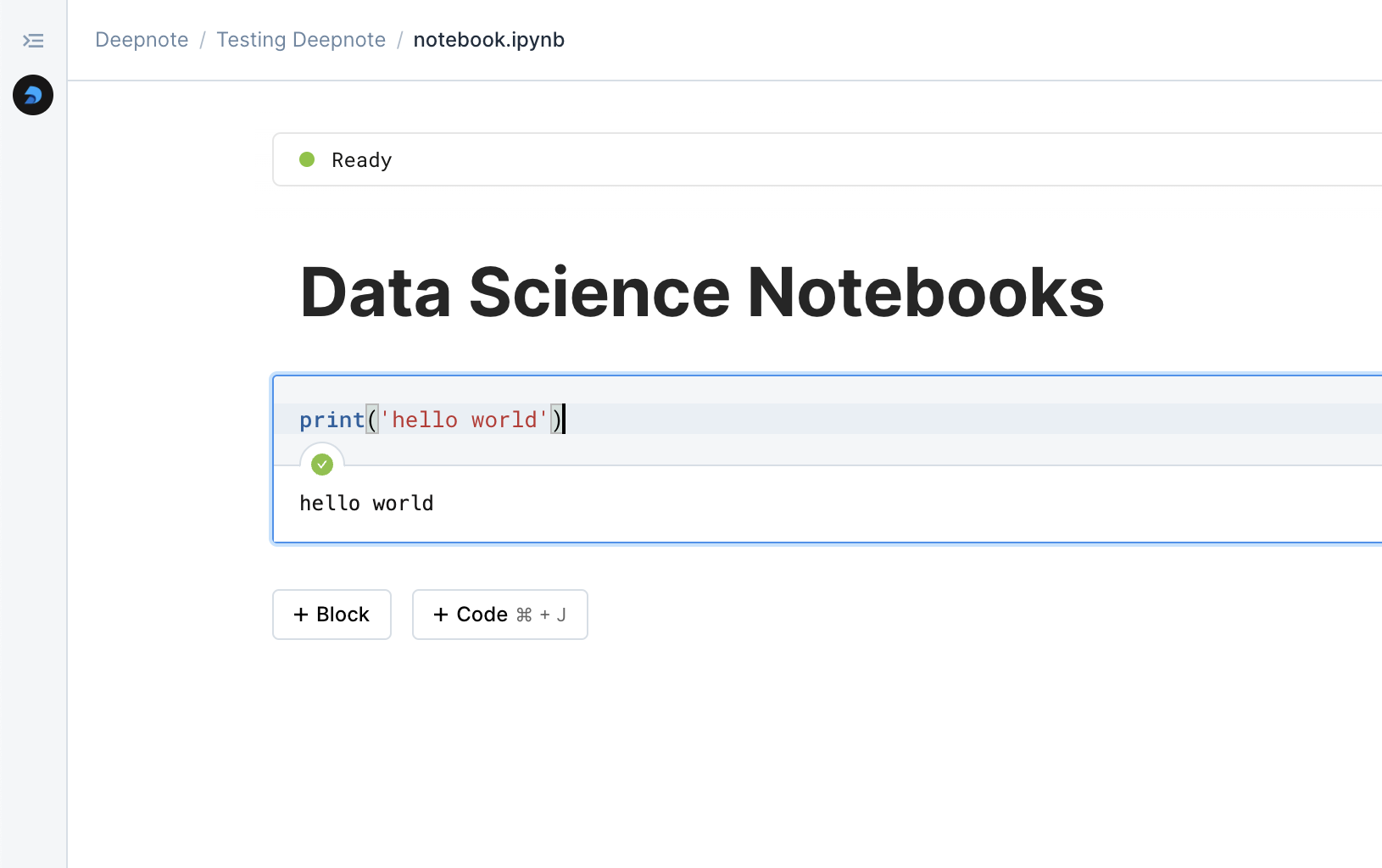

Amazon QuickSight

Comparing two data science notebooks.






In today's data-driven world, selecting the right platform for your analytics needs can significantly impact your organization's success. Amazon QuickSight and Deepnote represent two distinct approaches to data analysis and visualization, each with its own strengths and target audiences. Let's explore how these platforms compare and which might be the better fit for your specific needs.
Amazon QuickSight emerges as Amazon's answer to modern business intelligence needs, positioning itself as a cloud-native BI service that emphasizes quick insights and interactive dashboards. With its recent integration of Amazon Q, QuickSight has evolved to offer generative BI capabilities, making data analysis more accessible to business users through natural language processing.
Deepnote, on the other hand, takes a fundamentally different approach. Rather than focusing solely on business intelligence, it provides a comprehensive data science workspace that combines the flexibility of notebooks with modern cloud capabilities. Its platform is designed to support the entire data workflow, from exploration and analysis to collaboration and deployment.
Amazon QuickSight shines in its integration with the AWS ecosystem. The platform offers seamless connectivity with AWS services, making it particularly valuable for organizations already invested in the Amazon cloud infrastructure. Its strength lies in creating interactive dashboards with an intuitive drag-and-drop interface, while also providing machine learning insights and anomaly detection capabilities.
In contrast, Deepnote builds upon the familiar notebook interface but extends it significantly with modern features. The platform offers sophisticated AI-assisted coding and visualization tools, making it easier for data scientists to explore and analyze data. What sets Deepnote apart is its emphasis on collaboration and real-time teamwork, allowing multiple users to work simultaneously on the same project with built-in version control.
When it comes to data connectivity, both platforms offer robust options but with different focuses. QuickSight excels within the AWS ecosystem, providing native integration with services like Amazon S3, Redshift, and Aurora. This tight integration makes it particularly appealing for organizations that have standardized on AWS services.
Deepnote takes a more platform-agnostic approach to data connectivity. It offers extensive integration options with various data sources and databases, making it more versatile for organizations that work with diverse data stacks or multiple cloud providers. This flexibility allows teams to connect to virtually any data source while maintaining a consistent workflow.
The collaborative aspects of these platforms reveal significant differences in their approach. Deepnote has built collaboration into its core, offering real-time multi-user editing capabilities that mirror modern document collaboration tools. Teams can work simultaneously on the same notebook, share insights, and maintain version control effortlessly.
QuickSight approaches collaboration through a more traditional BI lens, focusing on sharing dashboards and insights across organizations. While it excels at distributing finished analyses and interactive dashboards, it's less focused on the collaborative aspects of data analysis and exploration.
The decision between Amazon QuickSight and Deepnote ultimately depends on your organization's specific needs and workflow requirements. QuickSight presents an excellent choice for organizations deeply embedded in the AWS ecosystem that primarily need business intelligence and dashboard creation capabilities. Its strengths in data visualization and AWS integration make it particularly suitable for business users who need to create and share insights quickly.
Deepnote, however, emerges as the superior choice for organizations that require a more comprehensive data science platform. Its combination of notebook functionality, real-time collaboration, and advanced AI capabilities makes it ideal for data science teams working on complex analytical projects. The platform's ability to support the entire data workflow, from exploration to deployment, makes it particularly valuable for organizations that prioritize flexibility and collaboration in their data work.
While both Amazon QuickSight and Deepnote serve the data analysis community, they cater to different needs and use cases. QuickSight excels as a business intelligence tool within the AWS ecosystem, while Deepnote provides a more comprehensive platform for data science teams requiring advanced collaboration and analysis capabilities. Understanding these differences is crucial in selecting the platform that will best serve your organization's data analysis needs and future growth.
The choice between these platforms should align with your team's workflow, technical requirements, and collaborative needs. Whether you prioritize business intelligence dashboards or need a full-featured data science workspace will ultimately guide your decision between these powerful platforms.